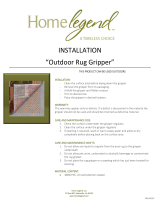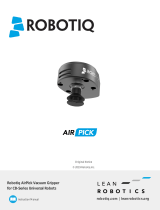IDEAL INDUSTRIES 45-935 is a programmable bench top machine that accurately removes the outside jacket from shielded twisted pair cable. The STP addresses occupational ergonomic needs by offering an alternative to manual stripping methods which are known to have contributed to cumulative tissue trauma. The STP system automatically adjusts to the size of the cable being stripped up to a maximum diameter of 0.3125 inches. Cable strip length is programmable by inches or millimeters. The strip length is adjusted in preset increments from a minimum of 1-1/4 inches to a maximum of 6.00 inches. A strip operation cycle can be completed in as little as five seconds.
IDEAL INDUSTRIES 45-935 is a programmable bench top machine that accurately removes the outside jacket from shielded twisted pair cable. The STP addresses occupational ergonomic needs by offering an alternative to manual stripping methods which are known to have contributed to cumulative tissue trauma. The STP system automatically adjusts to the size of the cable being stripped up to a maximum diameter of 0.3125 inches. Cable strip length is programmable by inches or millimeters. The strip length is adjusted in preset increments from a minimum of 1-1/4 inches to a maximum of 6.00 inches. A strip operation cycle can be completed in as little as five seconds.




















-
 1
1
-
 2
2
-
 3
3
-
 4
4
-
 5
5
-
 6
6
-
 7
7
-
 8
8
-
 9
9
-
 10
10
-
 11
11
-
 12
12
-
 13
13
-
 14
14
-
 15
15
-
 16
16
-
 17
17
-
 18
18
-
 19
19
-
 20
20
-
 21
21
-
 22
22
-
 23
23
IDEAL INDUSTRIES 45-935 User manual
- Type
- User manual
- This manual is also suitable for
IDEAL INDUSTRIES 45-935 is a programmable bench top machine that accurately removes the outside jacket from shielded twisted pair cable. The STP addresses occupational ergonomic needs by offering an alternative to manual stripping methods which are known to have contributed to cumulative tissue trauma. The STP system automatically adjusts to the size of the cable being stripped up to a maximum diameter of 0.3125 inches. Cable strip length is programmable by inches or millimeters. The strip length is adjusted in preset increments from a minimum of 1-1/4 inches to a maximum of 6.00 inches. A strip operation cycle can be completed in as little as five seconds.
Ask a question and I''ll find the answer in the document
Finding information in a document is now easier with AI
Other documents
-
TrafficMASTER RGP58 Installation guide
-
TrafficMASTER RGD24 Installation guide
-
 Home Legend OG24 Installation guide
Home Legend OG24 Installation guide
-
Micro Motion Model PM9749 Process Master Transmitter Owner's manual
-
 ROBOTIQ EPick User manual
ROBOTIQ EPick User manual
-
Omega HHP360 Series Owner's manual
-
Omega HHP350 Series Owner's manual
-
Watts Heating Cable Repair Kit Owner's manual
-
Micro Motion Model RFT9749 Rack-mount Transmitter Owner's manual
-
ELECRAFT K1 Owner's manual
























